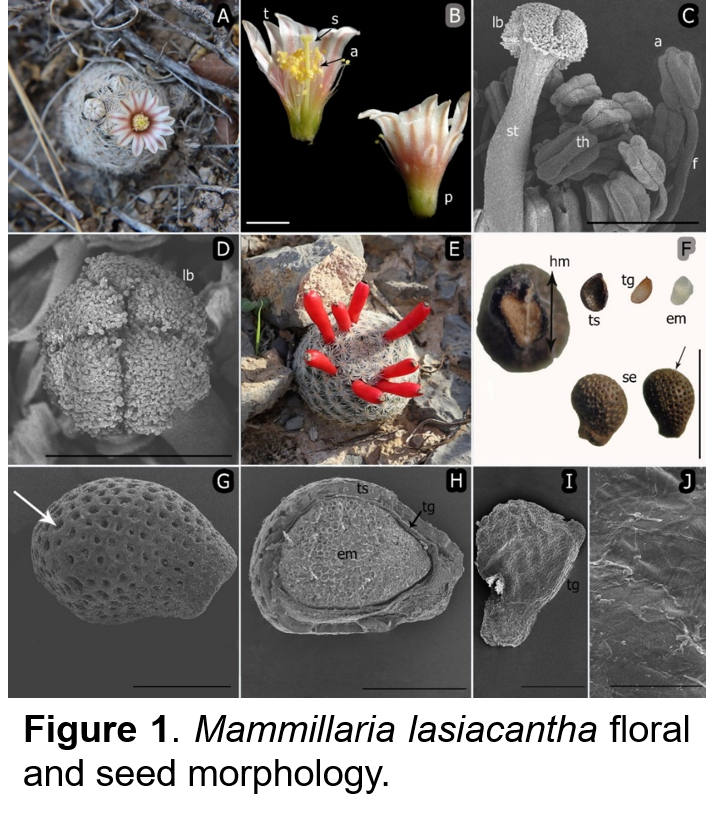Floral morpho-anatomy and reproductive biology of Mammillaria lasiacantha Engelm. (Cactaceae) at Sierra of Juárez, Chihuahua
DOI:
https://doi.org/10.56890/jpacd.v26i.526Keywords:
floral anatomy, outcrossing, germination, herkogamyAbstract
Mammillaria lasiacantha is a small cactus that inhabits at Sierra of Juárez, Chihuahua, Mexico. Their populations have been affected by habitat destruction, illegal extraction, and uncontrolled tourism in the region that steps on the seedlings; therefore, knowing its reproductive biology is necessary for its conservation. Our main questions were: What is the floral morphology and anatomy like? What type of sexual and mating system do M. lasiacantha present? Do the seeds produced by the crosses germinate, how and in what percentage? Sixty individuals from a population of 120 plants were studied at Sierra of Juárez, Juárez Chihuahua from January to August 2021. The study of the floral morpho-anatomy was carried out. Four treatments were applied: natural selfing, forced selfing, geitonogamy and forced outcrossing plus a control. Pollinated flowers, fruits, number of seeds and germination percentage were recorded. Flowers have naked pericarp, funnel-type nectary, nectarostomata, closed style and collateral vascular bundles. The anatomical characteristics of M. lasiacantha agree with those reported for other species of Mammillaria. The flowers of M. lasiacantha present herkogamy, with an obligate outcrossing system. The seeds produced from the outcrossing and control group germinated in 32 and 76%, respectively. The herkogamy and strict outcrossing system of M. lasiacantha should be confirmed in other populations. The seeds are positive photoblastic, without dormancy, but the study of the seed bank and seedling survival in the field would be pertinent. The ex-situ conservation of M. lasiacantha in the site will be feasible, since species high percentage of germination may contribute to produce plants for restoration programs.
Publication Facts
Reviewer profiles N/A
Author statements
Indexed in
- Academic society
- Journal of the Professional Association for Cactus Development
- Publisher
- Professional Association for Cactus Development




